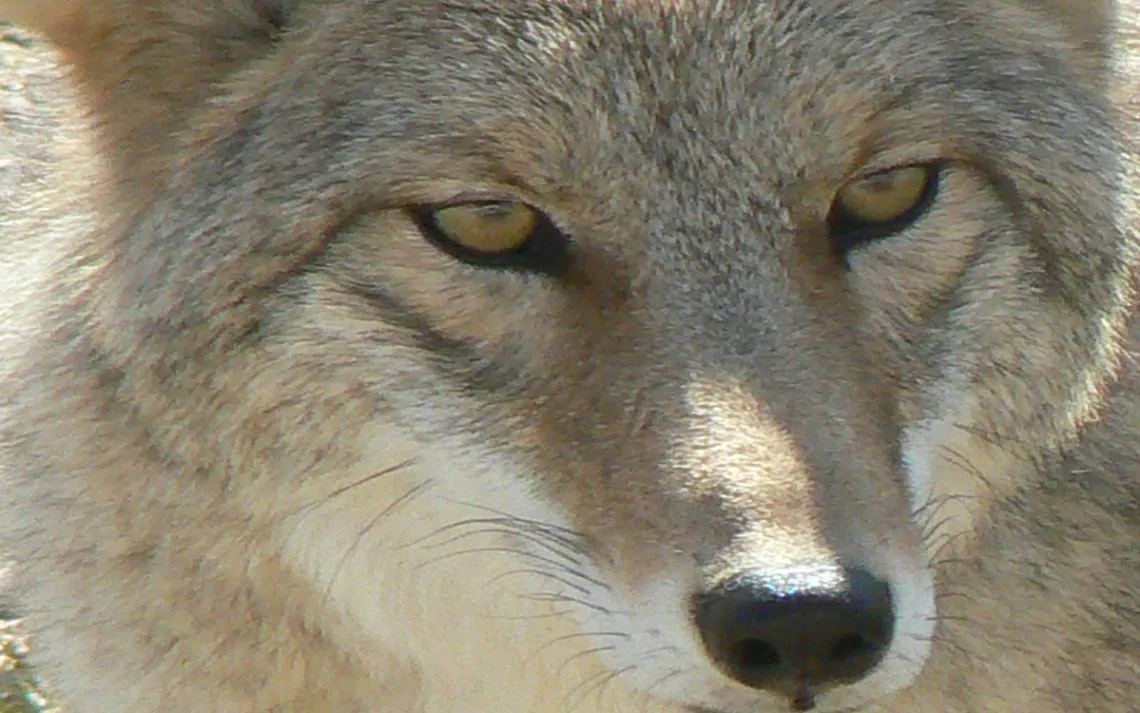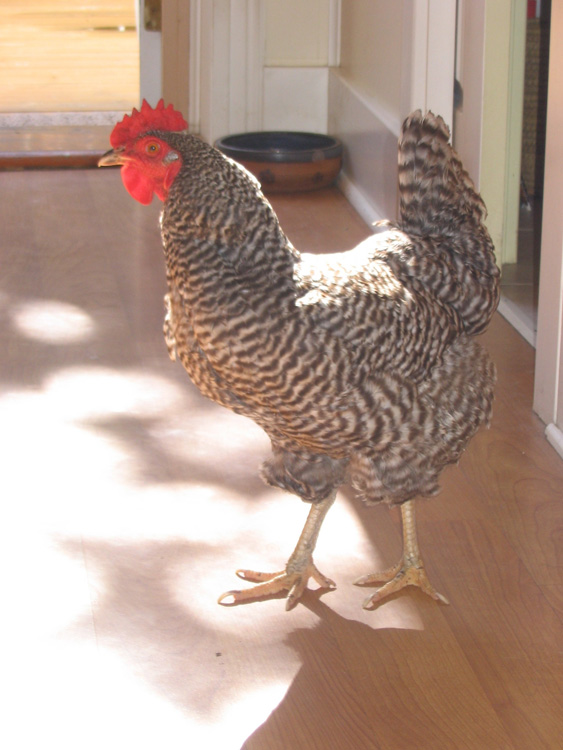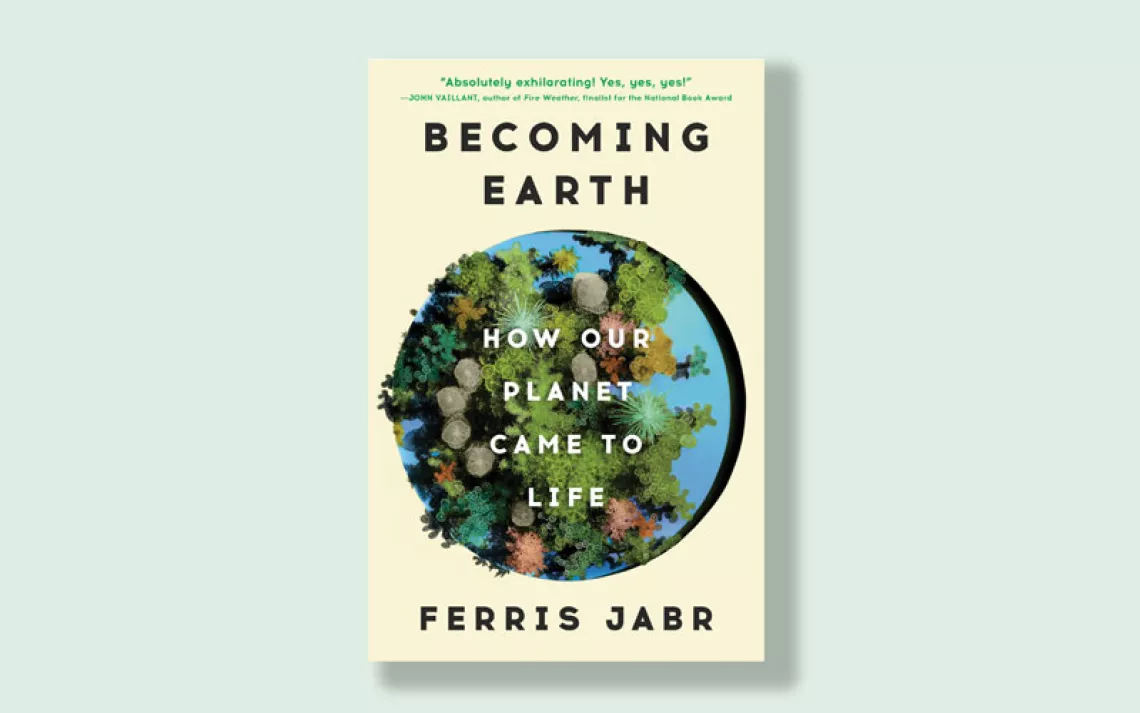Yes, Animals Have Personalities—And They’re Altering Wildlife Biology
Read about ENFJ dolphins and cliquey bugs in “Mousy Cats and Sheepish Coyotes”

Photos courtesy of John Shivik and Beacon Press
 Describe a guppy as stubborn or a chicken as crafty, and you might attract sidelong glances from old-fashioned wildlife biologists. Scientists have long disdained anthropomorphism, or the notion that whatever emotions humans experience, animals must, too. A species’s behavior, biologists held, was determined solely by what it ate, what was out to eat it, and its drive to kill or forage. That’s what wildlife biologist Dr. John Shivik was taught in graduate school—that animals operate simply by instinct. But after spending years watching coyotes and working as a state predator biologist, federal regional wildlife researcher, and search-and-rescue dog handler, Shivik concluded that individual animals such as coyotes could actually be, well, pretty unpredictable. “Observing long enough, I’ve concluded that they are bipolar animals: sometimes aggressive predators and sometimes wary cowards,” he writes in his latest book, Mousy Cats and Sheepish Coyotes: The Science of Animal Personalities (Beacon Press, 2017).
Describe a guppy as stubborn or a chicken as crafty, and you might attract sidelong glances from old-fashioned wildlife biologists. Scientists have long disdained anthropomorphism, or the notion that whatever emotions humans experience, animals must, too. A species’s behavior, biologists held, was determined solely by what it ate, what was out to eat it, and its drive to kill or forage. That’s what wildlife biologist Dr. John Shivik was taught in graduate school—that animals operate simply by instinct. But after spending years watching coyotes and working as a state predator biologist, federal regional wildlife researcher, and search-and-rescue dog handler, Shivik concluded that individual animals such as coyotes could actually be, well, pretty unpredictable. “Observing long enough, I’ve concluded that they are bipolar animals: sometimes aggressive predators and sometimes wary cowards,” he writes in his latest book, Mousy Cats and Sheepish Coyotes: The Science of Animal Personalities (Beacon Press, 2017).
 As Shivik, the author of 2014’s The Predator Paradox: Ending the War With Wolves, Bears, Cougars, and Coyotes, continued to study wildlife and commune with fellow biologists, evidence of animal personality kept piling up: Studies revealed that individuals within a single species, such as western bluebirds, range from aggressive to passive. Mosquitofish can be adventurers or homebodies. Some spiders are loners, while others prefer to live in groups. Elk can be even-keeled and consistent, or just as easily exhibit flighty and capricious behavior. Primates read emotional situations to resolve conflicts of personality, and reptiles form cliques—Shivik describes their society as “lizard high school.” The playfully enlightening Mousy Cats chronicles the author’s deepening understanding that, like people, all animals are individuals—and that their internal conditions and behavior patterns are major factors determining their outcomes.
As Shivik, the author of 2014’s The Predator Paradox: Ending the War With Wolves, Bears, Cougars, and Coyotes, continued to study wildlife and commune with fellow biologists, evidence of animal personality kept piling up: Studies revealed that individuals within a single species, such as western bluebirds, range from aggressive to passive. Mosquitofish can be adventurers or homebodies. Some spiders are loners, while others prefer to live in groups. Elk can be even-keeled and consistent, or just as easily exhibit flighty and capricious behavior. Primates read emotional situations to resolve conflicts of personality, and reptiles form cliques—Shivik describes their society as “lizard high school.” The playfully enlightening Mousy Cats chronicles the author’s deepening understanding that, like people, all animals are individuals—and that their internal conditions and behavior patterns are major factors determining their outcomes.
The book details experiments that demonstrate how every insect, fish, bird, and mammal is its own special snowflake, and how such individual characteristics render them adaptive to changing environmental conditions. These studies of animal emotion and individuality, Shivik writes, are freeing wildlife biologists up to use the term “personality”—some are going so far as to use Myers-Briggs categorization to describe creatures including dolphins. In the process, they are breaking science free from some bounds of unconscious bias; in other words, errors of omission due to anthropocentric hubris.
 For pet owners and anyone else who’s ever bonded with an animal, the “every critter is unique” conclusion might not land like breaking news. As I write this, my overconfident ham of a German shepherd/pitbull mix is glaring in his defiant way, making a point of pilfering carefully arranged throw pillows from the couch and taking them onto the table where I’m working (and where he’s not allowed) to rigorously shake them back and forth, like prey he’s snatched from the forest floor. This is a clear attempt to will me to close my laptop—I know he’ll be happy, and behave, once I pay his antics attention. Meanwhile, his sister, a vizsla mix (and an INFP to her brother’s ENTP, by my amateur estimations), serenely snuggles my feet. A fearful dog, she lives to please and is at her most content when her human protectors are close, calm, and still. If I get up to tend to her brother, she’ll get extra needy and grumble. Shivik, too, has long been well aware, on a personal level, that animals are as variable and idiosyncratic as we are. Mousy Cats is peppered with entertaining and often heartwarming anecdotes about the coyotes, cats, and dogs he’s come to know and love—the most memorable among which is Pinguino (pictured, right), the loud, mischievous, demanding, and annoying cat who gets credit on the page for teaching Shivik that “sometimes, you need to be an asshole to survive.”
For pet owners and anyone else who’s ever bonded with an animal, the “every critter is unique” conclusion might not land like breaking news. As I write this, my overconfident ham of a German shepherd/pitbull mix is glaring in his defiant way, making a point of pilfering carefully arranged throw pillows from the couch and taking them onto the table where I’m working (and where he’s not allowed) to rigorously shake them back and forth, like prey he’s snatched from the forest floor. This is a clear attempt to will me to close my laptop—I know he’ll be happy, and behave, once I pay his antics attention. Meanwhile, his sister, a vizsla mix (and an INFP to her brother’s ENTP, by my amateur estimations), serenely snuggles my feet. A fearful dog, she lives to please and is at her most content when her human protectors are close, calm, and still. If I get up to tend to her brother, she’ll get extra needy and grumble. Shivik, too, has long been well aware, on a personal level, that animals are as variable and idiosyncratic as we are. Mousy Cats is peppered with entertaining and often heartwarming anecdotes about the coyotes, cats, and dogs he’s come to know and love—the most memorable among which is Pinguino (pictured, right), the loud, mischievous, demanding, and annoying cat who gets credit on the page for teaching Shivik that “sometimes, you need to be an asshole to survive.”
In Mousy Cats, Shivik describes personality as “an elusive alchemy of the identifiable and ineffable,” a force “that has to be consistent to be demonstrable, but that can’t be static robotic programming.” He explains, “We accept [personality] intuitively but can’t measure it succinctly, like height or weight.” The blossoming field of animal-personality research, indeed, requires more than dry objectivity—“Science has to rely on other tools, such as stories, too.” This right-brained approach has those who study animal behavior confirming that nature selects for a variety of personality types, in everyone from one-celled creatures to humans, and that evolution is thus driven by difference, not sameness. What’s more, behavior, as scientists are learning, is every bit as important for individuals and species competing and cooperating in the wild as physiology. (“I enjoy when science aligns with what my mother told me growing up: Personality is more important than looks,” the author shares.)
For instance, one Mousy Cats case study shows that male striders (also known as water bugs) that exhibit confidence have a lot more sex. However, the ones who act so assertive to be, as Shivik writes, “assholes,” turn female striders off with their hyper-aggressive ways—the ladies end up fleeing from the pools these guys inhabit. It begs the question of why Darwinian forces of natural selection wouldn’t wipe out the pesty bugs once and for all, ensuring that future generations of striders are marked by suave confidence. Not so fast. The science presented in this book sheds light on how, exactly, societies form, and shows that to thrive, they must exist as collectives of leaders, followers, fighters, lovers, and everyone in between. It’s a powerful—and particularly prescient—argument for the importance of all manner of diversity.
 Mousy Cats breaks down assumptions like “aggressive fighter birds who win the best nest sites should dominate populations,” by showing that “peacenik homebody birds” are also crucial. For one, they’re more attractive as mates and reproduce at more successful rates. “Opposites not only attract,” Shivik writes, “but the vigor of the variability they instill in their young is also hugely beneficial; the paired parents with either extreme of the behavioral spectrum produced fledglings in the best condition, which led to the highest nest success.” Individual personalities create emergent properties that build societies in ways that drive ecological systems. The book makes a case for why breeders (as well as countries and corporations) should not try to micro-engineer their populations by selecting for single desirable traits—like hens capable of laying the most eggs. As Mousy Cats’ cautionary parable about “super-chickens” reveals, amassing teams of top performers leads to in-fighting and aggression, which actually slows down innovation. It’s a thought that might make you more patient not only with your fear-addled dog or macho cat, but also with your loud, pushy coworker or your shy neighbor who won’t say “hi” back.
Mousy Cats breaks down assumptions like “aggressive fighter birds who win the best nest sites should dominate populations,” by showing that “peacenik homebody birds” are also crucial. For one, they’re more attractive as mates and reproduce at more successful rates. “Opposites not only attract,” Shivik writes, “but the vigor of the variability they instill in their young is also hugely beneficial; the paired parents with either extreme of the behavioral spectrum produced fledglings in the best condition, which led to the highest nest success.” Individual personalities create emergent properties that build societies in ways that drive ecological systems. The book makes a case for why breeders (as well as countries and corporations) should not try to micro-engineer their populations by selecting for single desirable traits—like hens capable of laying the most eggs. As Mousy Cats’ cautionary parable about “super-chickens” reveals, amassing teams of top performers leads to in-fighting and aggression, which actually slows down innovation. It’s a thought that might make you more patient not only with your fear-addled dog or macho cat, but also with your loud, pushy coworker or your shy neighbor who won’t say “hi” back.
Mousy Cats is a charmingly written, amusing read, and it's chock-full of cocktail conversation fodder for animal lovers. (Did you know, for instance, that cloning doesn’t re-create personality, or that spider monkeys ritualistically connect by hugging—a tool that softens the edges between different personalities?) The book is feel-good and practically applicable—it certainly left me more appreciative of my canines’ individual quirks and needs. But more importantly, it subtly reinforces the notion that individual variation is the fundamental driver of the success of life on Earth. What would we learn if we took the insights gleaned from observing bluebirds and spiders and lizards and applied them to humans? Shivik states that, particularly because we have perfected our weapons to the point that we could very well cause our own extinction, humans should look to the animal kingdom for cues on how to balance our bellicose propensities with our peaceful ones. “Having too many serene lovers may seem like it would usher in an age of unambitious ennui, but one too many brave fighters who are willing to push to the brink of nuclear war will spawn an age of doom.”
 Ultimately, Shivik makes a strong case for “zoomorphizing,” which is using animals and their behaviors and societies as mirrors of human individual and collective behaviors. Mousy Cats will certainly give you more reason than ever to observe and protect wildlife—and it'll also help justify all that time spent in your backyard or before your cats’ condo, marveling at the scientifically proven specialness of your pets’ wiles.
Ultimately, Shivik makes a strong case for “zoomorphizing,” which is using animals and their behaviors and societies as mirrors of human individual and collective behaviors. Mousy Cats will certainly give you more reason than ever to observe and protect wildlife—and it'll also help justify all that time spent in your backyard or before your cats’ condo, marveling at the scientifically proven specialness of your pets’ wiles.
 The Magazine of The Sierra Club
The Magazine of The Sierra Club



